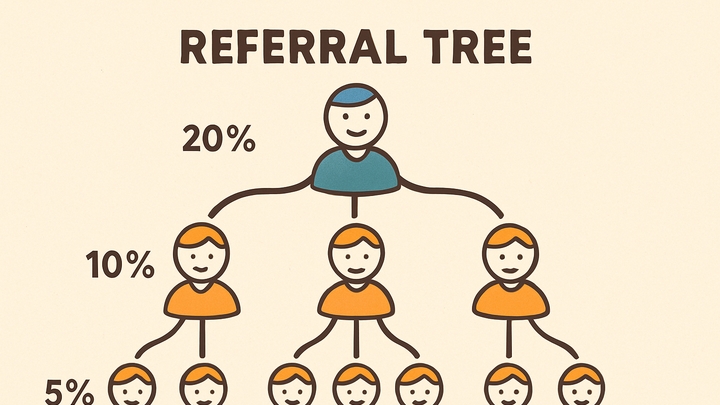Published on 2025-06-26T04:58:52Z
What is Viral Coefficient? Definition & Examples
In analytics, Viral Coefficient quantifies how effectively a product or service grows through user-to-user referrals. It represents the average number of new users acquired by each existing user over a given period. A coefficient (commonly called k-factor) above 1 indicates exponential growth, while a value below 1 suggests that organic user acquisition alone will eventually plateau.
Measuring the Viral Coefficient helps teams understand the health of their referral loops and optimize
their growth strategies. Modern analytics platforms such as GA4 and PlainSignal make it possible to track
the invitation and referral conversion events required to compute this metric. By integrating event
tracking into your onboarding and sharing flows, you can gather the data needed to calculate
i (invitations per user) and c (conversion rate), which feed into the Viral
Coefficient formula. Regular monitoring allows you to spot trends, experiment with incentives, and iterate
on your product to boost organic growth.
Viral coefficient
The Viral Coefficient measures how effectively users invite new users, indicating a product's organic growth potential.
Definition and Significance
Covers the core meaning of the Viral Coefficient, its definition in analytics, and its impact on understanding organic growth and referral effectiveness.
-
Concept of viral coefficient
The Viral Coefficient, also known as k-factor, measures the average number of new users generated by each existing user through referrals or shares.
-
Importance in growth
A Viral Coefficient greater than 1 indicates that each user brings in more than one new user, enabling exponential growth. Values below 1 signal that organic referrals alone won’t sustain user base expansion.
Calculating Viral Coefficient
Breaks down the standard formula for computing the Viral Coefficient and how to interpret its values.
-
Standard formula
The Viral Coefficient (k) is calculated as:
k = i × c
Where
iis the average number of invitations sent per user, andcis the conversion rate of those invitations. -
Interpreting results
If k > 1, your referral loop drives exponential growth. If k = 1, each user replaces themselves—growth is steady. If k < 1, organic referrals will lead to eventual decline without additional acquisition.
Tracking Viral Coefficient with Analytics Tools
Describes how to set up event tracking in PlainSignal and GA4 to collect data on invitations and conversions.
-
PlainSignal setup
Integrate PlainSignal’s cookie-free simple analytics to capture referral events directly in your dashboard. Example tracking code:
<link rel="preconnect" href="//eu.plainsignal.com/" crossorigin /> <script defer data-do="yourwebsitedomain.com" data-id="0GQV1xmtzQQ" data-api="//eu.plainsignal.com" src="//cdn.plainsignal.com/plainsignal-min.js"></script>Track custom events named
invite_sentandinvite_acceptedto calculateiandc. -
GA4 configuration
In Google Analytics 4, define custom events for
invite_sentandinvite_accepted. Mark the acceptance event as a conversion. Use GA4 Explorations or export to BigQuery to compute the Viral Coefficient over time.
Strategies to Improve Viral Coefficient
Outlines practical tactics to increase the number of invitations per user (i) and boost
invitation conversion rates (c).
-
Simplify sharing flow
Provide one-click referral links, social media integration, and pre-filled messages to encourage users to send more invites.
-
Offer incentives
Reward both the referrer and referee with discounts, credits, or exclusive features to improve the likelihood of successful referrals.
-
Enhance onboarding
Optimize the new-user experience to deliver immediate value, raising the conversion rate of referral invites.
Limitations and Best Practices
Highlights common pitfalls in relying on Viral Coefficient metrics and guidelines for accurate measurement.
-
Data quality challenges
Ensure you deduplicate referral sources, filter out bots or spam, and correctly attribute conversions to their originating invites.
-
Avoid abuse
Implement rate limits and validation checks to prevent users from gaming referral incentives or sending unsolicited spam.
-
Balance metrics
Complement Viral Coefficient with other KPIs like retention rate and lifetime value to get a holistic view of growth health.
